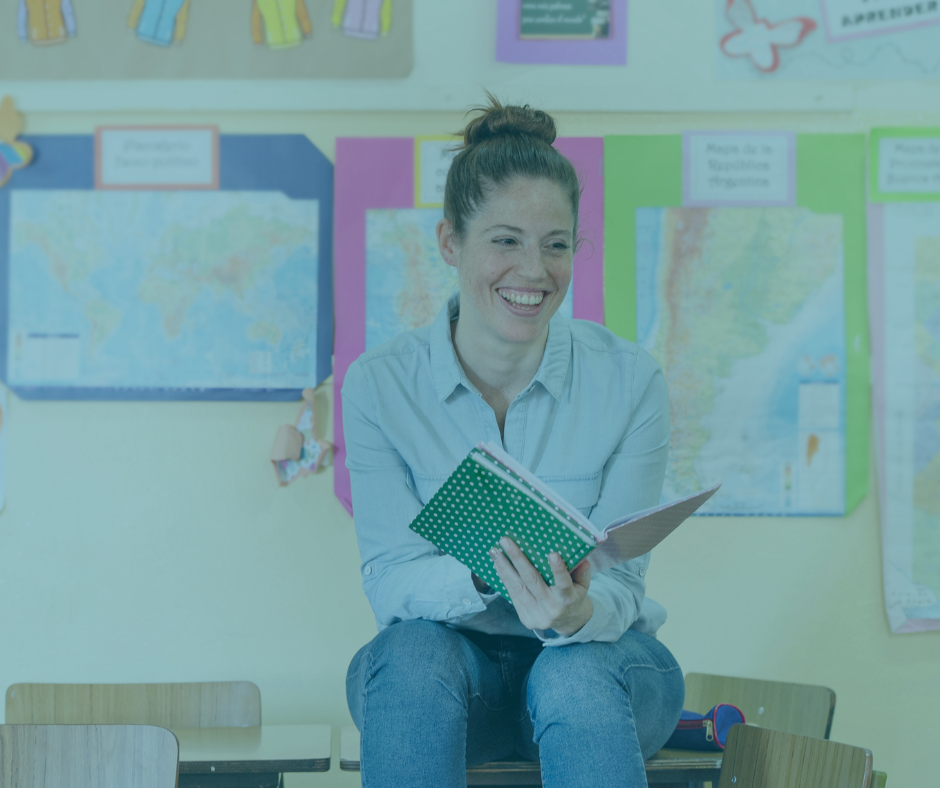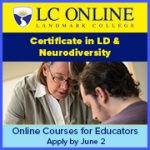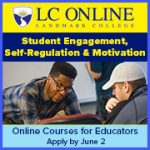Author’s note: Versions of this article have appeared in LDA Today, www.LDonline.org and is also included in serialized form in the author’s blog on The Huffington Post..
For many students with brain-based learning disabilities, the unrelenting frustration involved in taking in, processing and producing information is a rather chronic condition. The cycle of challenge and defeat is not unlike the punishment of Sisyphus, the king of Corinth who according to Greco-Roman mythology was punished in Hades by having to push a huge boulder up a steep hill, only to have it roll incessantly back down. For kids with LD, there may be occasional plateaus or small ledges on which this stone can rest (summer vacations?), but most of these kids experience school as a difficult, frustrating and emotionally unsettling place. Too few know the joys that come from repeated successes; too many are beaten down very early by the implied message that they are supposed to be able to do what the other kids do, and do it as easily.
Pre-Inclusion
In the pre-inclusionary times of the mid-seventies and early eighties, college graduates who had trained to be special educators found work in learning centers, resource rooms or self-contained programs that were designed to meet the needs of students with Learning Disabilities. They had the time to work with a relatively small number of students and provide them with intensive, direct instruction—an approach that these newly-minted teachers had learned would be effective with these students. When well implemented, that model of service delivery worked amazingly well. Kids with learning disabilities learned. They moved through school with a feeling of competence, and many became successful, happy and productive adults. Many of us who worked in schools at this time thought that these were the “glory days” of the field of Learning Disabilities. But as it often does in special education, the pendulum of change began to swing.
The Inclusion Movement
Over the next several decades–primarily as a consequence of the inclusion movement and the ascension of high stakes testing–we have witnessed a dramatic reduction in specialized, intensive instructional programs for students with LD, and a corresponding large-scale return of students with LD and other types of disabilities to regular classes. While the intentions of the inclusion movement were admirable—a long overdue chance for handicapped individuals to experience the dignity that comes from equal opportunity–the efficacy of so-called inclusion for students with learning disabilities was, and continues to be a huge disappointment.
A majority of the teachers working in general education classrooms had been trained as “regular” teachers and not as special educators. Despite excellent training and praiseworthy teaching skills, many of these professionals find themselves insufficiently prepared or inadequately supported to meet the special needs of students with LD who have been assigned to their classes. If you doubt this, all you have to do is ask them when their boss is not listening. The public assertion that inclusion is an effective approach for students with LD is simply an updated version of Hans Christian Andersen’s tale of The Emperor’s New Clothes. The failure of a general education delivery model for students with LD continues to result in long waiting lists at many excellent independent LD schools across the country. Just ask any special education director whose budgets are busted by “out-of-district” placements!
Intensive Instruction
Despite abundant research and clinical observations that students with LD require and benefit from intensive instruction, this model is not often offered in public schools. Intensive instruction is characterized by flexible teaching approaches, use of a wide variety of instructional materials and technologies, and a belief that the goal of teaching is to accelerate student progress by any means possible. This is a species of education that would be headed for extinction, were it not for the visions of a few brave souls who are breeding the few remaining specimens in an effort to increase the herd. And there is a correlation between those out-of-district placement budgets and the efforts to breathe life into an old model. (Which, incidentally, turns out to be much less expensive than the private school option. Ask special education directors how many parents would be overjoyed if the school set up a self-contained, highly specialized, well-staffed in-house LD classroom.)
Suffice it to say that I am worried. As a neuropsychologist specializing in the interaction of stress and learning disabilities, I am worried about the mental health of kids and I am worried about their families. And as a teacher educator, I worry about teachers. A lot. Thousands of good general educators are being asked to educate millions of kids who need more than they have the time or expertise to give. And don’t get me started about the over-use of inadequately trained instructional aides to solve this problem!
All is not gloom and doom. There is hope. From my perspective, one of the major contributions of inclusion which is well conceived and well supported, has been the transformation that takes place when talented and motivated regular and special educators work together as members of a collaborative team. In schools that have “done inclusion right” I have witnessed the emergence of a new breed of professional who creatively builds bridges between curriculum and kids with learning disabilities, ADHD, Asperger Syndrome and other conditions that can derail learning. In the paragraphs that follow, I would like to introduce you what I have come to call the Hybrid Teacher. This might not be a solution for the dearth or (death) of self-contained specialized programs in which intensive specialized instruction can take place, but perhaps it’s a way to do some damage control.
Let me use this opportunity to share the characteristics of this new breed of teacher, so that you will recognize one when you see her or him. In my view, a professional with many of the traits listed below is the closest thing I can find to a “great teacher” for kids with learning disabilities.
The Hybrid Teacher…
Understands the relationship between emotion and cognition.
Unless she’s working with a child who is known to have primary emotional disturbance, she does not assume that learning difficulties are the consequence of being upset. Rather, she understands that emotional reactions and in many cases, negative behaviors are coping mechanisms triggered by the stress generated by frustration and fear of what a child sees as inevitable failure. She does not use this understanding to excuse, or allow the student to excuse this behavior, but to help explain it and work through it or around it. She also understands that many of these negative emotions and troubling behaviors go away when students feel competent and successful.
Knows that students learn in different ways.
This does not trivialize by saying: “He’s a visual learner.” The Hybrid Teacher says things like: Because testing and my observations have confirmed that Jamilla can’t hold on to the auditory images of [sounds, syllables, words, sentences, paragraphs, my voice, the voices of many kids and teachers in the cafeteria, the sequence of directions, etc. etc., etc.), I need her to understand that (1) this task is going to be difficult and (2) that she has the skills, or that I am going to teach her the skills to handle this task, and (3) that some of the other kids may not have to use these tools, but that she does, and (4) that she will be successful if she does.
Focuses on the learner first and the curriculum second.
He takes the student to a place of cognitive and psychological safety before venturing into deeper waters of new material. He reviews not what was taught yesterday, but the student’s feeling of success with that material. This teacher understands the importance of creating a positive connection to prior learning, of tapping into a student’s positive emotions about a task or a topic, and helping students recognize and reduce negative influences on learning (e.g., automatically saying or thinking: I can’t DO math!”) by practicing thought-stopping techniques and generating positive self-statements that are tied to actual successful experiences.
Demonstrates the ability to expose students to a variety of stimuli.
He also knows when students are connected emotionally and cognitively to the experience. The Hybrid Teacher also gives students the opportunity to demonstrate what they have learned in a variety of ways, and publicly values these alternative ways to display knowledge and skills.
Is guided and energized by finding out what facilitates effective learning and what gets in the way.
The focus of teaching is to minimize the impediments by educating the learner about his own cognitive style, modifying the curriculum without lowering standards, and creating a learning space in which students can feel safe and competent.
Praises the process that students use as often or more than the product they create.
Teachers who ask kids “how did you get that answer” generally get a scowl or a “huh?” response, which isn’t very reinforcing. When Hybrid Teachers get a blank stare in response to this question, they give the student a couple of possible choices (“because you took all the distracting things off your desk,” or “I noticed that you put on the headphones to block out the noise from the classroom.” This can generate an “Oh, yeah” response; the next time the question is asked, that student is more likely to come up with an answer that address how she figured something out. That’s the behavior of a successful learner.
Understands that it’s not about having kids work harder, but rather that they work smarter.
Hybrid Teachers ask kids what strategies they have used in the past to be successful in any kind of learning (in school or outside of school) and helps to translate that skill and recreate that positive learning experience in the classroom. We all know the student who can take apart and rebuild a computer but can’t read. The Hybrid Teacher focuses on how the student learned to do the former and uses that knowledge as a basis for specialized instruction in reading. If a child says “I remember everything I see” the Hybrid Teacher capitalizes on that strength by developing a sight word vocabulary or a symbol system that supplements weak language processing skills. This kind of “mining for assets” leads to increased success and the confidence that comes from it.
Knows that it’s important to separate skill instruction from content acquisition.
A blind student may not be able to read small print, but she can certainly learn content. Making modifications in that case is a “no-brainer.” Hybrid Teachers keep that image in mind when they work with students with visual perceptual difficulties that get in the way of fluent reading. Remember that when poor readers rely on reading to gain knowledge, they miss a lot of information. Students who have problems holding words or sounds in working memory simply cannot benefit from a lecture that’s not supported by visual cues. Remember what it’s like to know just a little Spanish when you try to understand those rapidly delivered directions to the airport in Mexico City.
Is willing to take a risk when it comes for advocating for a student with LD in her classroom.
It takes courage tell an administrator that “This kid will just not be successful without some significant supports—more than I’m able to give in this classroom even though I’m awesome.”
Examines his classroom practices to identify what works and what doesn’t.
These teachers are more likely than other teachers to want to work with another adult, ask for feedback about performance, go to professional conferences and inservice training with the needs of individual students in mind, and be willing and able to teach others what they know.
Knows how to work as a team with the student as the key member.
Building and maintaining relationships with the family takes time and a sincere desire to hear the family’s story. Giving the family the time to tell a teacher what worked and what didn’t in the past, or what the struggles are around homework, yields data that may be more important than any test score. Reaching out to physicians to get and give information if medication or health issues are involved is an important skill. Working with ancillary personnel in the school (speech therapists, occupational therapists, etc.) and helping them help the teacher incorporate therapeutic interventions in the classroom is critically important.
Understands that cultural and language factors play an important role in learning.
Just because a student “speaks good English” doesn’t rule out the possibility that there is confusion between the first and second language or that delays in language processing or reading are related to the simultaneous translation that’s going on in the student’s head. Hybrid Teachers are able to read subtle but important behaviors such as eye contact or physical proximity, and accurately interpret them in the social/cultural context of the child. She knows how to differentiate a language difference from a learning disability or knows who to ask.
Is able to cover the curriculum by understanding the child.
To consider each child as a unique individual is for these teachers not just a euphemism; this belief is acted upon minute by minute, even in large and diverse classrooms. Each child is connected to the teacher by a line. For some students, it’s a gossamer spider’s thread that registers every movement of the learner; for others it’s a large ship’s cable that takes a powerful action to get it to move. The Hybrid Teacher is connected to kids and kids are connected to this teacher most of the time. This allows the teacher to be responsive to not only the student with LD, but all learners in the classroom.
The Last Word:
I know that there are other traits that distinguish this teacher. The reader can add to this list, as I will as time goes on. By the way, I forgot to mention: The Hybrid Teacher is always a twin, or has been cloned, so that one of them can sleep, eat, do research on best teaching practices and go to the toilet while the other teaches.
In all seriousness, it is a delight to watch these teachers in action. They are everywhere if you look. They may be young or old; they can be professionally trained or “natural” teachers. Parents need to seek them out, reward them, advocate for more time, money and resources to support them, praise them for their work and bring them flowers. If your child gets one of these teachers every two or three years, he or she is probably going to be ok. Administrators need to pay these people more money, praise them more, show them off more. They are the hope for children with learning disabilities in these changing and challenging times, and my experience suggests that we have reason to be hopeful. Let me know if you know one of these exquisite creatures.
For Further Reading
How Teachers Can Help Students with Learning Disabilities
Resources on Teaching and Learning
Successful Strategies for Teaching Students with Learning Disabilities
Author: Jerome J. Schultz, Ph.D.
For over 35 years Dr. Jerome (Jerry) Schultz has specialize in the neuropsychological assessment and treatment of children and adolescents with learning disabilities, ADHD, Asperger Syndrome and other special needs. He earned his B.A. and M.A. from The Ohio State University and holds a Ph.D. from Boston College. Having started out his professional career as a middle school special education teacher, he subsequently directed several hospital or university-based clinics for children and families. He is now on the faculty of the Harvard Medical School in the Department of Psychiatry, and teaches psychologists and psychiatrists about students with special needs.
In addition to his clinical work and teaching, Dr. Schultz serves as an international consultant and offers professional development to schools and organizations on issues related to the neuropsychology and appropriate education of children with special needs. He is respected for his realistic, practical and supportive work with teachers who are committed to meeting the needs of children with fragile emotions and challenging behaviors. Currently, Dr. Schultz serves as the in-house mental health consultant to several large public school systems in the Boston area.
Dr. Schultz served for many years as the Expert on Learning Disabilities and ADHD at www.familyeducation.com, a website for parents and teachers, and has been a contributor to www.ldonline.org. He sits on the Editorial Advisory Board of the LDA Journal, Learning Disabilities, and is on the Advisory Board of www.insideADHD.com, and www.myEdGPS.com. His highly praised book Nowhere to Hide: Why Kids with ADHD and LD Hate School and What We Can Do About It examines the relationship between stress and learning. Dr. Schultz is the Chair of the Professional Advisory Board of LDA and has been a frequent presenter and keynoter at LDA State and National Conference. Learn more about Dr. Schultz at www.jeromeschultz.com. Twitter: @docschultz, Huffington Post Blog: www.huffingtonpost.com/jerome-schultz/.



